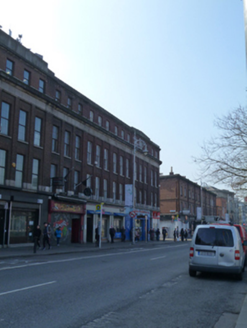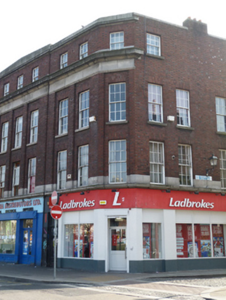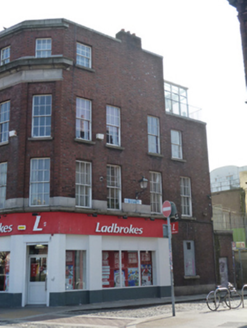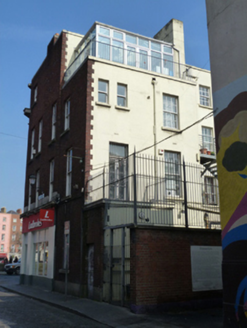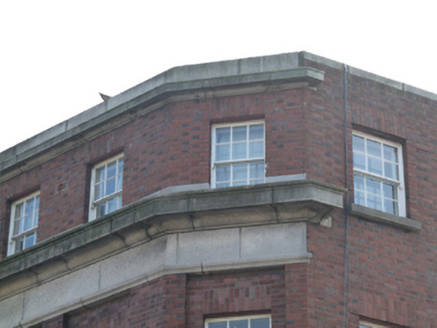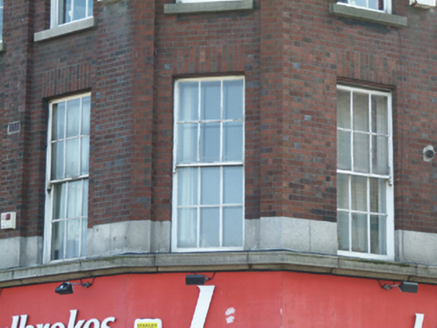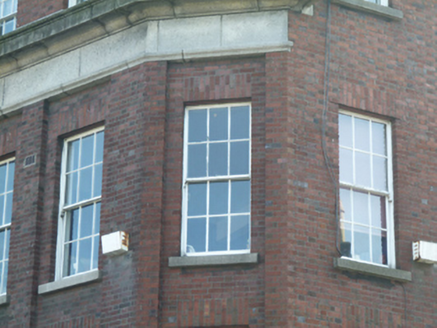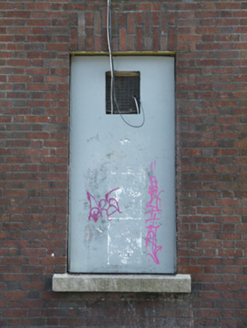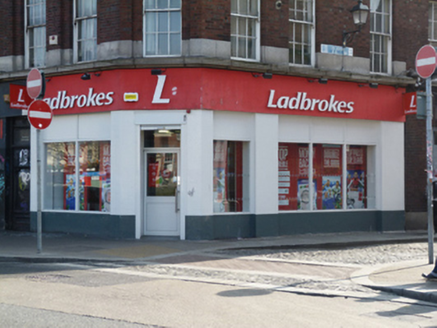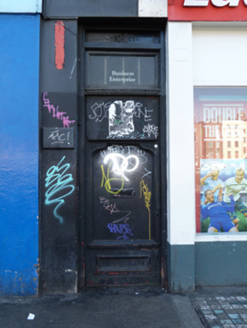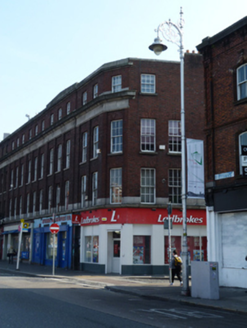Survey Data
Reg No
50020198
Rating
Regional
Categories of Special Interest
Architectural, Social
Original Use
Shop/retail outlet
In Use As
Shop/retail outlet
Date
1930 - 1950
Coordinates
315818, 234266
Date Recorded
19/03/2015
Date Updated
--/--/--
Description
Corner-sited end-of-terrace three-bay four-storey over basement commercial and apartment building, built c.1940, with canted corner bay to north-west, four-bay elevation to west and wraparound recent shopfront to front (north) and west elevations. Now in retail use. Flat roof hidden behind cut granite parapet to front, red brick parapet having granite coping to west elevation, with red brick chimneystack. Carved granite cornice over red brick, laid in Flemish bond to walls to north and west elevations, having granite entablature and cornice over second floor, platband to first floor and brick pilasters dividing bays to first and second floors, to front. Smooth rendered wall with red brick quoins to rear (south) elevation. Square-headed window openings with continuous granite sill courses, granite sills to second floor, having six-over-six pane timber sliding sash windows, one-over-one-pane timber sliding sash or timber casement windows to rear. Carved granite cornice over masonry pilasters to ground floor, recent render shopfront. Square-headed door opening to east of front, timber panelled door with carved detailing and plain overlight. Located on south side of Aston Quay, at junction with Bedford Row.
Appraisal
Aston Quay was laid out in the late seventeenth century on land reclaimed from the River Liffey and was named after Henry Aston, a Dublin merchant. The original buildings have been replaced over time and little fabric of early date survives. The buildings in this block were demolished in the 1930s and were subsequently rebuilt in a restrained classical style to house a variety of manufacturing and retail uses. The fenestration pattern and continuous granite entablature, cornice and parapet create a strong horizontal emphasis and give the impression of a unified, cohesive composition. Carved granite is used to good effect to articulate and provide a visual contrast to the red brick of the façade.
